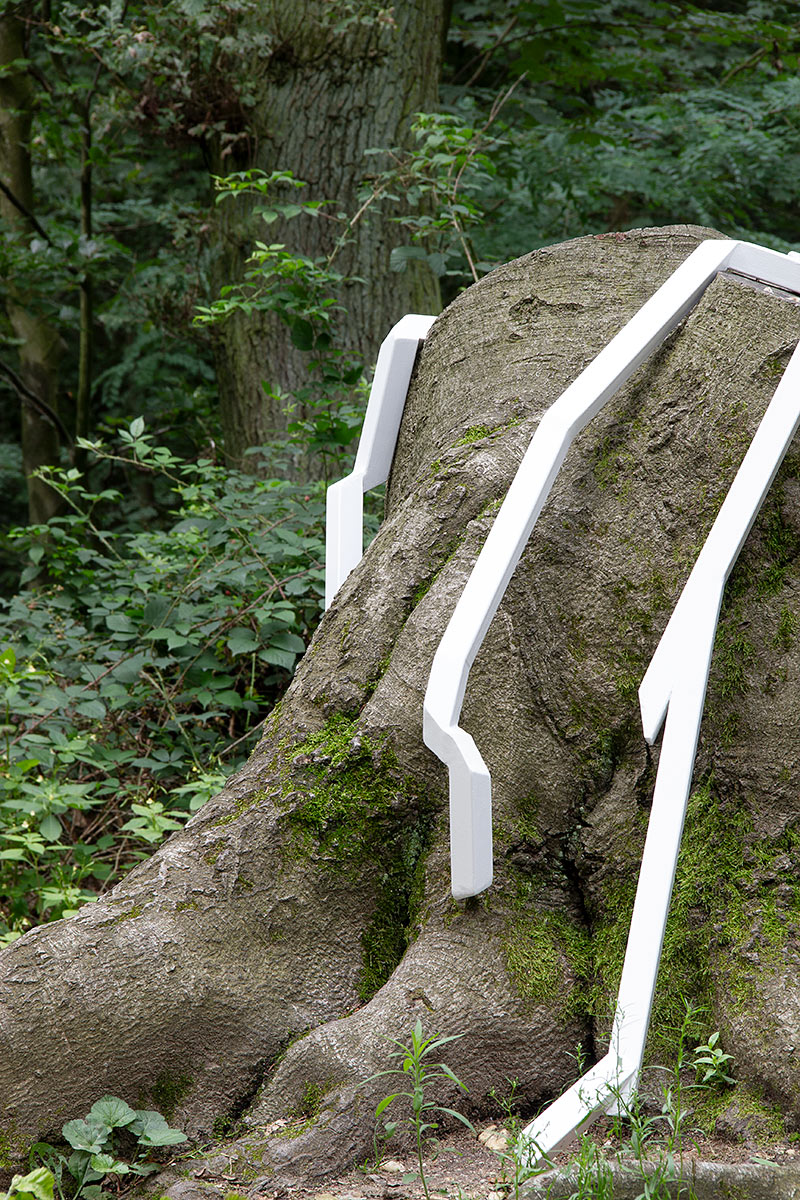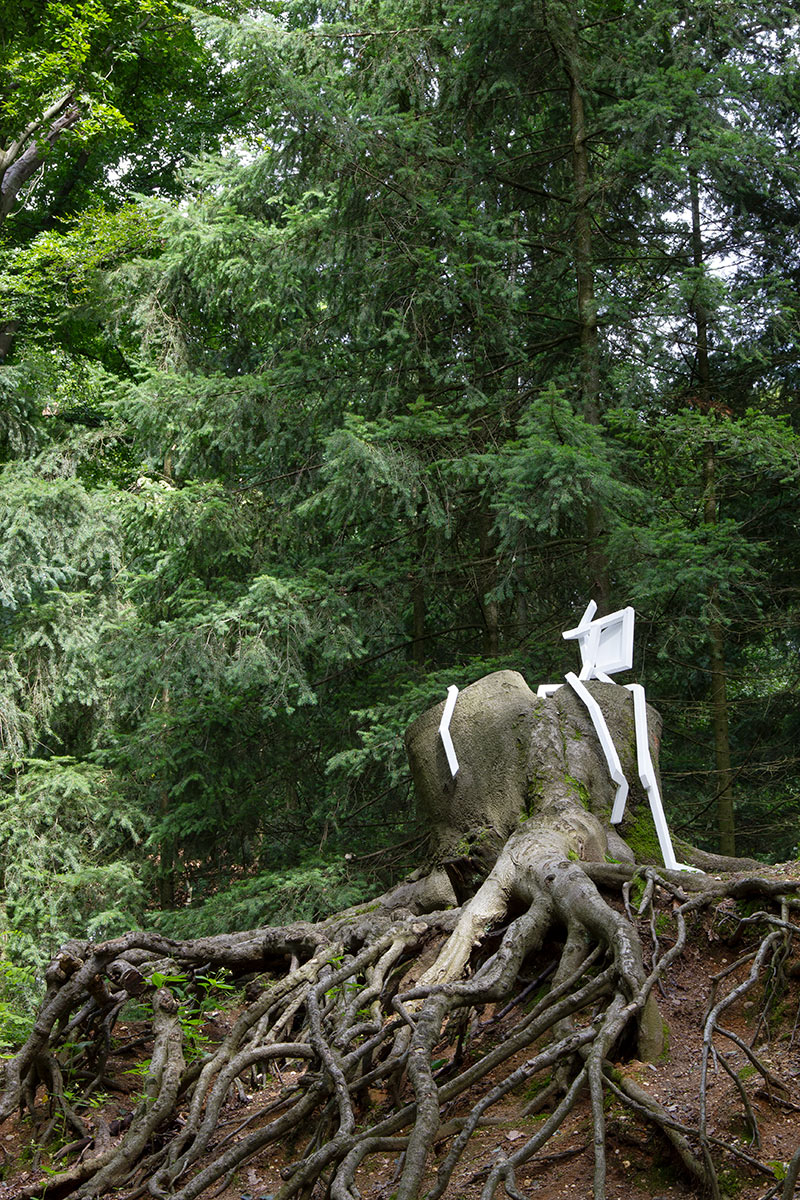fragmentary traces
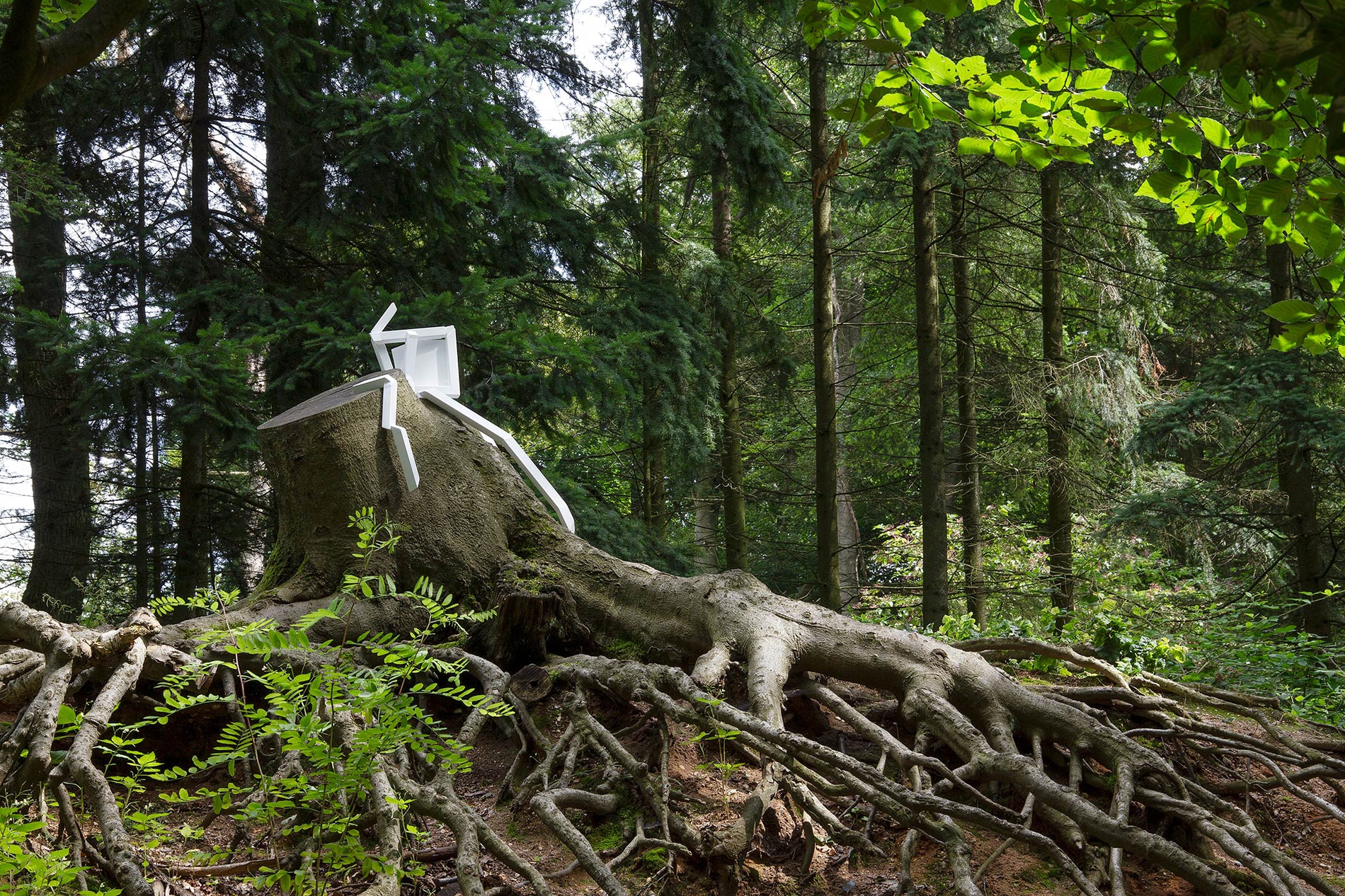
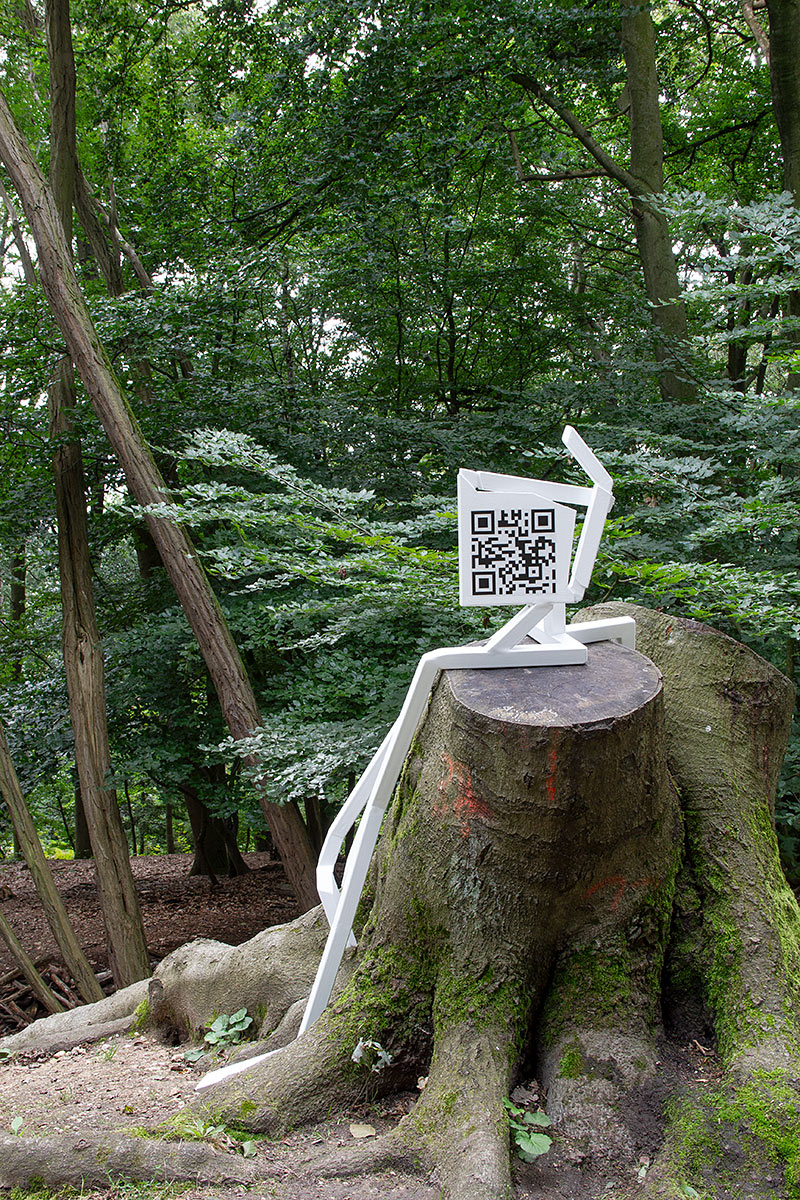
fragmentary traces
2023
Hoher Busch, Viersen
Stahl und Augmented Reality
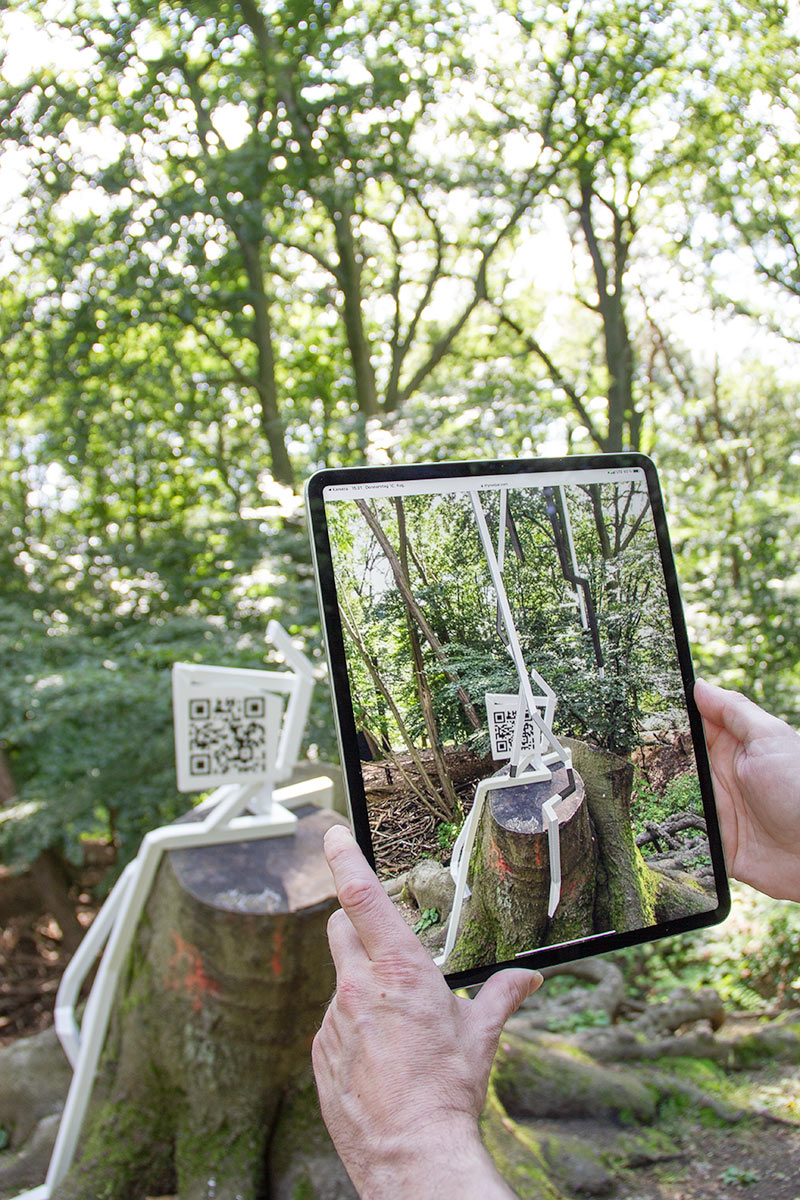
About fragmentary traces
About fragmentary traces
The stump of a beech tree is the starting point for “fragmentary traces”, a sculpture designed for the forest situation and its specific location. It is enhanced by augmented reality. The physical and digital interface of the work parallels the encounter between man and nature. The tree stump stands as a kind of “contemporary witness” on a path that was created after the tree was felled. In this way, the site visualizes both human intervention and the use of the forest as well as the change in the forest as a reaction to this. Walkers can scrutinize this and try to understand it: Why was the tree felled? What stories has the tree experienced? How did it develop its roots? Why do they protrude over the slope? Where does the bulge in the ground come from?
“fragmentary traces” develops a possible form of the tree or the tree crown, a form that the tree could have had before it was felled. The form is fragmentary, just like the memory or the individual parts into which it was dismembered. It hints at the many possibilities of further processing the wood or our associations when we see the work.
The Hoher Busch forest area, nature in general, is emotionally charged and has many connotations. “fragmentary traces” picks up on the structures of the roots. Like tentative offshoots that become supports, they could raise questions: How do we understand nature? How do nature and culture interact? Can the relationship between man and nature work? Does it need to be rethought? Can technology and digitalization be vehicles for a deeper understanding of nature? Are technical inventions so interwoven with us that we are already living in a post-natural age? What are the advantages and disadvantages?
Der Baumstumpf einer Buche ist Ausgangspunkt für „fragmentary traces“, eine Skulptur, die für die Waldsituation und den Ort konzipiert wurde. Erweitert wird sie durch Augmented Reality. Die physische und digitale Schnittstelle der Arbeit ist eine Parallele zur Begegnung von Mensch und Natur. Der Baumstumpf steht quasi als „Zeitzeuge“ an einem Weg, der angelegt wurde, nachdem er gefällt worden war. So macht der Ort sowohl den Eingriff des Menschen und die Nutzung des Waldes als auch die Veränderung des Waldes als Reaktion darauf sichtbar. Diese können die Spaziergänger*innen hinterfragen und versuchen zu verstehen: Warum wurde der Baum gefällt? Welche Geschichten hat der Baum erlebt? Wie hat er seine Wurzeln ausgebildet? Warum ragen sie über den Hang? Woher stammt die Wölbung im Erdboden?
„fragmentary traces“ entwickelt eine mögliche Form des Baumes bzw. der Baumkrone, eine Form, die er gehabt haben könnte, bevor er gefällt wurde. Die Form ist fragmentarisch, so wie die Erinnerung oder die Einzelteile, in die er zerlegt wurde. Sie deutet die vielfältigen Möglichkeiten der Weiterverarbeitung des Holzes oder unserer Assoziationen beim Anblick der Arbeit an.
Das Waldgebiet Hoher Busch, Natur überhaupt, ist emotional aufgeladen und vielfältig konnotiert. „fragmentary traces“ greift die Strukturen der Wurzeln auf. Wie tastende Ausläufer, die zu Stützen werden, könnten sie Fragen aufwerfen: Wie verstehen wir Natur? Wie greifen Natur und Kultur ineinander? Kann die Beziehung zwischen Mensch und Natur funktionieren? Muss sie neu gedacht werden? Können Technologie und Digitalisierung Vehikel für ein vertieftes Naturverständnis sein? Sind technische Erfindungen so mit uns verwoben, dass wir bereits in einer postnatürlichen Zeit leben? Welche Vor- und Nachteile gibt es?
